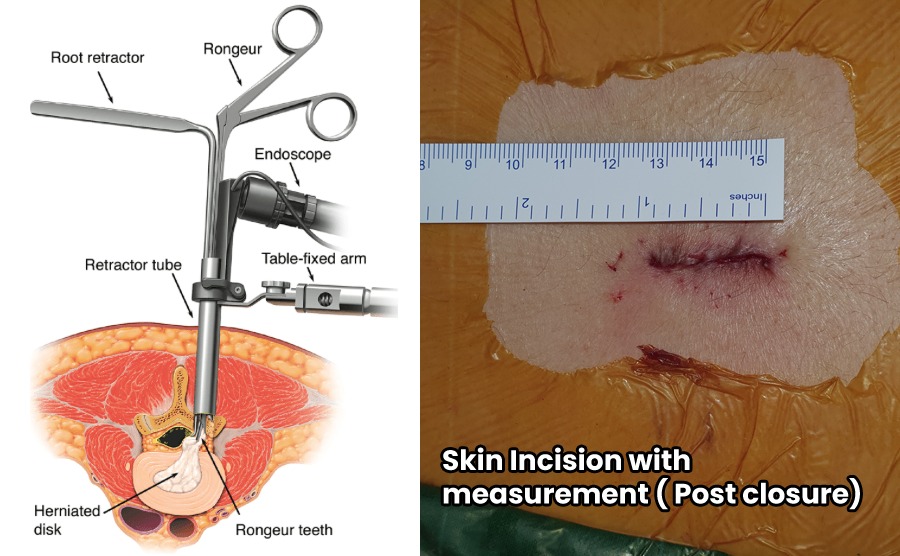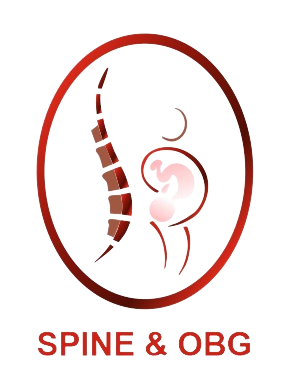
Lumbar Microdiscectomy
Microdiscectomy is the usual surgery for sciatica. This is a surgery performed through the microscope so as to make this a relatively safer procedure.
Lumbar Microdiscectomy
Intervertebral discs sit between each vertebra in the spine, and when damaged, they can compress spinal nerves. A discectomy is a surgical procedure aimed at removing all or part of these discs, commonly performed on lumbar discs in the lower back and occasionally on cervical discs in the neck.
Intervertebral discs act as cushions between spinal bones, but can deteriorate with age or become damaged from injury, leading to bulging or herniation and subsequent nerve compression. Surgery aims to alleviate pain, weakness, and numbness caused by nerve compression.
Our Spine Surgeon Dr. Arjun R H H will assess your condition thoroughly before surgery to determine the most suitable course of action.
Minimally invasive spine surgery is typically performed using specialized instruments and techniques that allow the surgeon to access the spine through small incisions. These procedures often utilize fluoroscopy or other imaging techniques to guide the surgeon’s instruments to the precise location. By minimizing damage to surrounding tissues, muscles, and nerves, this approach aims to reduce pain, scarring, and recovery time for the patient.
The recovery time for a microdiscectomy can vary depending on the individual and the specific details of the surgery. Generally, after the procedure, patients are often able to walk on the same day or the next day. Many patients are discharged within a day or two following the surgery, as it’s often performed as an outpatient procedure.
However, it’s crucial to note that the exact recovery timeline can vary based on factors such as the patient’s overall health, the extent of the disc herniation, and any complications that may arise during or after surgery. Some patients may experience relief from symptoms almost immediately after surgery, while others may require a few weeks to fully recover.
Overall, many patients experience significant improvement shortly after a microdiscectomy, it’s essential to understand that individual recovery experiences can vary, and Dr Arjun R H H & team will guide and support throughout the recovery process.
The risks of microdiscectomy include infection, bleeding, nerve damage, and rare complications such as spinal fluid leaks or blood clots. While complications are relatively uncommon, it’s essential for patients to discuss potential risks with Dr Arjun R H H before undergoing the procedure.
1. Effective Relief: It often provides significant relief from symptoms associated with a herniated disc, such as pain, numbness, and weakness in the affected area.
2. Minimally Invasive: Compared to traditional open surgery, microdiscectomy is minimally invasive, resulting in smaller incisions, less tissue damage, and potentially faster recovery times.
3. Lower Risk: With advancements in surgical techniques and technology, microdiscectomy carries a lower risk of complications compared to traditional open surgery.
4. Improved Function: By relieving pressure on the spinal nerves, microdiscectomy can help improve overall function and mobility, allowing patients to return to their normal activities with reduced pain and discomfort.
Dr Arjun R H H typically assesses the need for a microdiscectomy through a combination of physical examination, imaging tests (such as MRI), and a review of the patient’s medical history.
The physical examination may involve assessing strength, sensation, and reflexes in the affected area, as well as evaluating symptoms such as pain and limited mobility.
Imaging tests(MRI) help identify the location and severity of the herniated disc and determine if it’s causing nerve compression. Based on these assessments, Dr Arjun R H H will determine if microdiscectomy is the appropriate treatment option for the patient.
The typical duration of a microdiscectomy surgery ranges from 3 to 4 hours, although it can vary depending on factors such as the complexity of the herniation, the number of discs involved.
Microdiscectomy is known for its relatively short surgical time compared to traditional open spinal surgeries, due to its minimally invasive nature. However, the exact duration can be influenced by individual patient factors and any unforeseen complications that may arise during the procedure.
Following a microdiscectomy surgery, the duration of hospital stay is typically short, often ranging from a few hours to one or two days.
In many cases, patient may go home on the same day of the surgery, once they have recovered from the anesthesia and are considered stable by the medical team.
However, some patients may require an overnight stay for observation or if there are any concerns about their recovery. Overall, the duration of hospital stay following microdiscectomy surgery depends on factors such as the patient’s overall health, the extent of the surgery, and the surgeon’s recommendations.
After microdiscectomy surgery, maintaining a healthy spine involves a combination of medications, exercises, and lifestyle modifications.
For a safe and effective recovery, Dr Arjun R H H will prescribes medications to manage pain and inflammation during the recovery period.
Additionally, Doctor will recommend specific exercises to strengthen the muscles supporting the spine and improve flexibility. Depending on the patient’s overall condition and specific surgical outcome, the doctor may provide personalized recommendations . For more information and guidance, it’s advisable to consult Spine Surgeon Dr. Arjun R H H.
Views: 22
